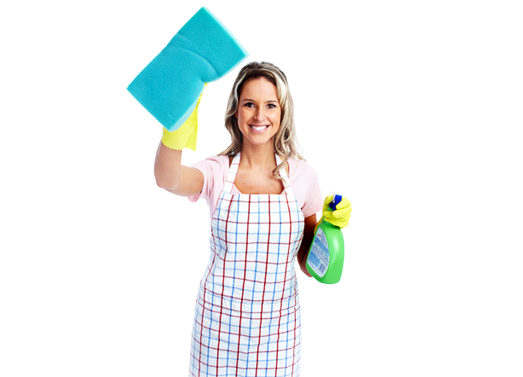Free Your Enamel Oven Trays from Grease with This Easy Cleaning Guide
Posted on 19/06/2025
Are your enamel oven trays coated in sticky, baked-on grease? With regular kitchen use, it's common for enamel baking trays and ovenware to accumulate stubborn residue that ordinary washing can't tackle. Whether you use your enamel trays for roasting, baking, or catching drips at the bottom of your oven, this comprehensive, step-by-step guide will show you how to restore them to a sparkling, grease-free condition--without harsh chemicals or expensive products.
Why Properly Cleaning Enamel Oven Trays Matters
Enamel-coated oven trays are prized for their non-stick surfaces and aesthetic appeal. However, when grease and grime build up on the surface, they can cause:
- Unwanted odors lingering in your oven
- Smoky residue interrupting your cooking sessions
- Uneven cooking or baking results
- Deterioration of the enamel coating over time
- Potential health issues from old, burnt oils
That's why it's essential to free your enamel oven trays from grease regularly and maintain them for safe, effective cooking.

Understanding Enamel Oven Trays
Enamel is essentially a glass-like coating bonded to metal, which helps prevent rusting and makes cleaning easier--in theory. However, frequent use can leave these trays with caked-on food, sticky oils, and burnt residues that are tough to remove.
The good news? You don't need to resort to toxic oven cleaners or abrasive scrubbing pads. With the right techniques, you can get your trays looking almost new again and extend their lifespan significantly.
The Best Way to Clean Enamel Oven Trays: Step-By-Step
Let's walk through a proven, easy cleaning process to free your enamel oven trays from sticky grease using tools and ingredients you most likely already own.
Step 1: Initial Preparation
- Remove the tray from the oven and allow it to cool completely before handling.
- Dispose of any loose food debris or crumbs.
- Gather your supplies:
- Baking soda (bicarbonate of soda)
- White vinegar or lemon juice
- Dish soap or washing-up liquid
- Non-abrasive sponge or soft brush
- Microfiber cloth
- Hot (but not boiling) water
- Rubber gloves (optional, for sensitive skin)
Step 2: Soak to Loosen Grease
- Fill your sink or bathtub with enough hot water to fully submerge the oven tray.
- Add a generous squirt of dish soap and about a half-cup of baking soda to the water.
- Submerge the enamel tray and let it soak for at least 30 minutes--or up to several hours for extreme buildup.
- If the tray isn't fully covered, turn it halfway through or use a wet towel to help keep the top moist.
Step 3: Apply a Baking Soda Paste
After soaking, sprinkle additional baking soda directly over the most greasy or burned-on areas.
- Add just enough water to the baking soda to make a thick paste.
- Let the paste sit for 15-20 minutes.
This will help break down stubborn grease and loosen stuck-on residues.
Step 4: Gentle Scrubbing
- Using a non-abrasive sponge or soft brush, start scrubbing in circular motions.
- If needed, add a little vinegar or lemon juice (this will cause a fizzing reaction with the baking soda, lifting grease more easily).
- For corners and crevices, use an old toothbrush to dislodge stubborn bits.
Avoid using steel wool, metal scourers, or abrasive powders, as they can scratch and damage the enamel coating.
Step 5: Rinse and Repeat if Necessary
- Rinse the tray thoroughly with hot water to remove all traces of grease, baking soda, and soap.
- Inspect the tray--if any greasy stains or stubborn residues remain, repeat the baking soda paste and scrubbing process.
Step 6: Dry and Restore Shine
- Dry the tray with a clean microfiber cloth or let it air-dry completely.
- For extra shine, you can wipe the tray with a small amount of vinegar and buff dry.
Alternative Methods to Clean Greasy Enamel Baking Trays
While the baking soda and vinegar method is the most natural and gentle solution, these additional techniques can help free your enamel oven trays from stubborn grease:
Dishwasher-Only Cleaning
- If your enamel trays are labeled as dishwasher-safe, place them in your dishwasher with a strong degreaser detergent and run the hottest cycle.
- Even after this, you may need to spot-clean any remaining greasy patches manually.
Commercial Enamel Cleaner
- Look for products especially formulated for enamel-coated cookware (avoid standard oven cleaners, as these can be too harsh).
- Read the label to ensure compatibility, then follow manufacturer instructions.
Boiling Water Method
- If you have burnt-on grease, fill the tray with water, add a tablespoon of baking soda, and bring to a gentle boil on the stove (if your tray is stove-safe).
- Let it simmer for a few minutes, cool, and then scrub as above.
Common Mistakes to Avoid When Cleaning Enamel Oven Trays
When trying to free your oven trays from grease, it's important to avoid these common pitfalls:
- Scratching the enamel: Never use metal scrubbers or harsh abrasives; these can wear down the non-stick surface and cause rusting under the enamel.
- Using bleach or caustic cleaners: Bleach can stain or dull the enamel, while oven cleaners may etch or weaken it.
- Not soaking long enough: For stubborn grease, patience pays--extended soaking helps break down residue for easier cleaning.
- Putting hot trays in cold water: This can cause the enamel to crack due to thermal shock.
- Letting grease build up: Regular light cleaning is far easier than dealing with thick, baked-on grease later.
How to Prevent Grease Build-Up on Enamel Ovenware
The best cleaning strategy is still prevention. Here's how you can keep your enamel trays grease-free with minimal effort:
- Wipe after each use: While the tray is still warm (not hot!), wipe off oils and crumbs for easier cleaning later.
- Line with parchment paper or a silicone mat: These provide a barrier for roasts and baked goods, minimizing direct contact with the tray's surface.
- Use non-stick sprays or a thin oil layer before cooking, to further prevent sticking and greasy residue.
- Address spills immediately: Drips and splatters are far easier to remove before they bake on and carbonize at high temperatures.

Frequently Asked Questions About Cleaning Enamel Oven Trays
Can I Use Oven Cleaner on Enamel Oven Trays?
No, most standard oven cleaners are too harsh for enamel-coated trays and can damage or discolor the finish. Always check product labels and opt for enamel-safe products or natural cleaning solutions.
Can I Put Enamel Oven Trays in the Dishwasher?
Check with the manufacturer. Many enamel trays are dishwasher-safe, but hand cleaning is gentler and prolongs the life of the enamel coating.
Why Does Grease Keep Sticking, Even After Cleaning?
Over time, small scratches or wear in the enamel can cause more sticking. Keeping the tray clean and using liners or oil barriers will help reduce further buildup.
Is It Safe to Use Baking Soda and Vinegar on Enamel?
Yes, both baking soda and vinegar are safe for enamel, provided you don't leave vinegar sitting for hours. Rinse thoroughly after use.
What If the Grease Still Won't Budge?
Stubborn carbonized grease may require several rounds of soaking and scrubbing. For extremely stuck-on residue, you may need to repeat the above steps or use a specialized enamel cleaner (always patch test first!).
Conclusion: Enjoy Your Sparkling Clean Enamel Oven Trays
By following this easy cleaning guide for freeing your enamel ovenware from grease, you can keep your kitchenware hygienic, odor-free, and looking like new for years to come. Remember, the combination of soaking, baking soda, vinegar, and gentle scrubbing offers an effective and safe way to lift even the most stubborn buildup--without damaging the beautiful enamel finish.
Make these steps part of your regular kitchen routine, and you'll never need to dread cleaning your enamel oven trays again!
Bonus: Quick Tips for Sparkling Enamel Bakeware
- Act fast: Tackle spills and greasy spots as soon as the tray cools.
- Always dry thoroughly to avoid water spots and potential rust on exposed metal edges.
- Store trays dry and upright to prevent accidental scratching.
Ready to free your enamel oven trays from grease and get back to effortless, enjoyable cooking? Keep this guide handy, and say goodbye to greasy oven woes--hello to gleaming, grease-free enamel bakeware every time!




